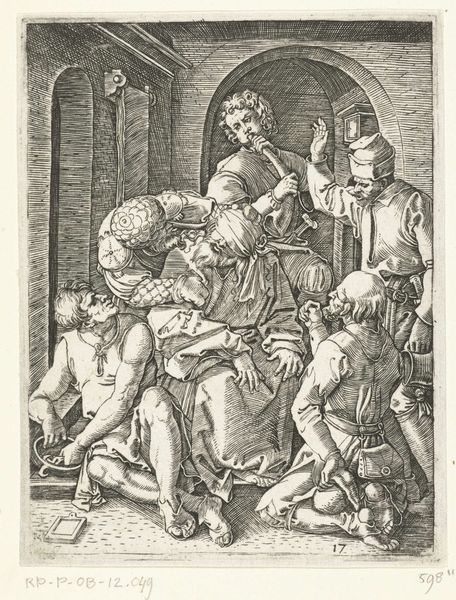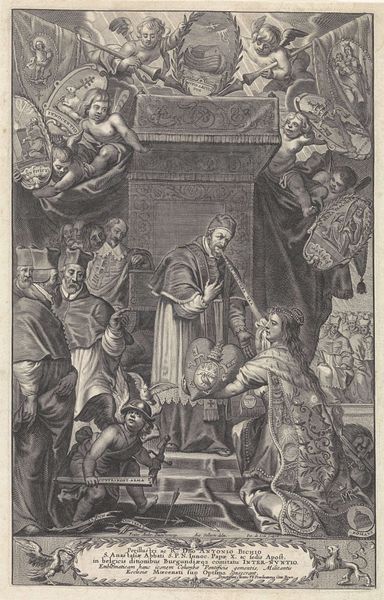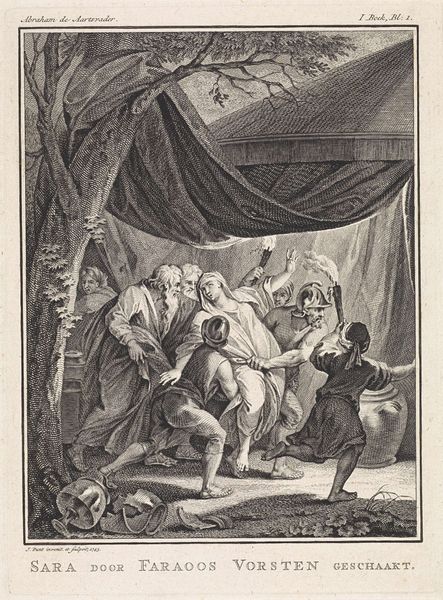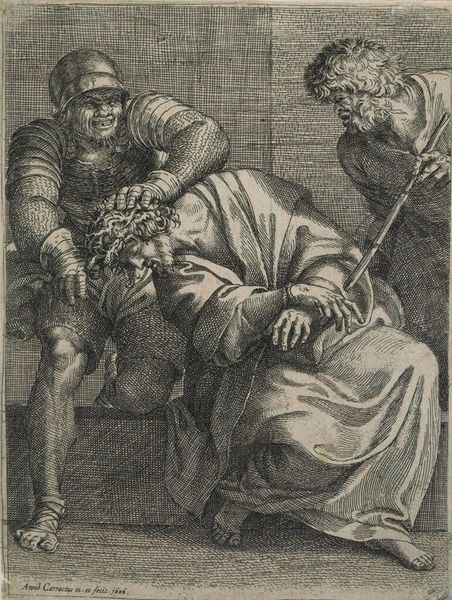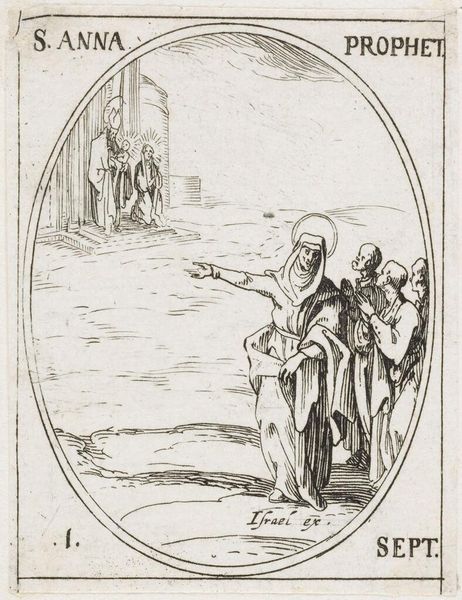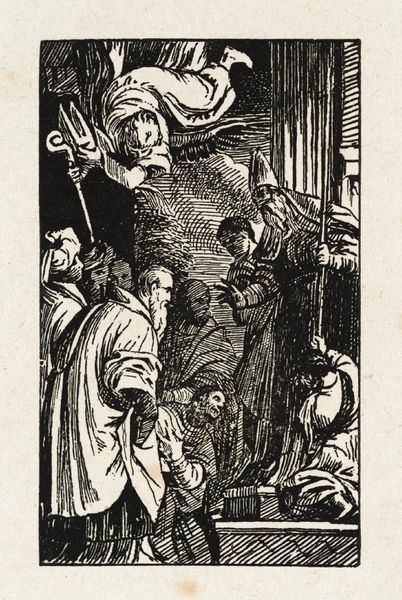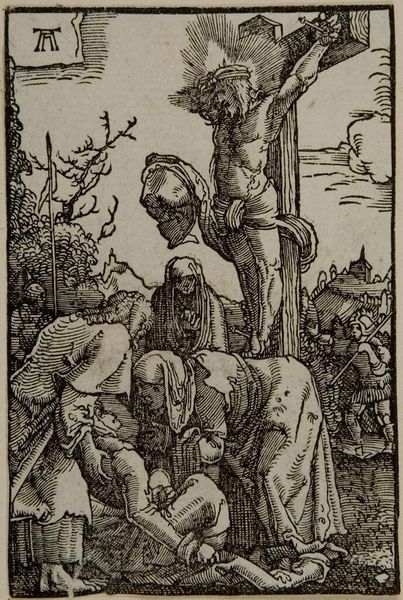
print, engraving
#
baroque
# print
#
figuration
#
history-painting
#
engraving
Dimensions: height 130 mm, width 81 mm
Copyright: Rijks Museum: Open Domain
Curator: Before us, we have Wenceslaus Hollar's "Wachters bij graf van Christus," or "Guards at Christ's Tomb," created around 1670. This piece, residing here at the Rijksmuseum, employs engraving techniques within the print medium. Editor: It has a somber feel, doesn’t it? The subdued palette enhances the gravitas. Note the carefully composed array of figures – a dramatic, pyramidal formation, heightened by contrasting light and shadow that lead the eye. Curator: Let’s consider Hollar’s social context. Prints, unlike paintings, were reproducible, making them accessible to a wider audience. "Guards at Christ’s Tomb" would likely have been circulated among the rising merchant class, reflecting the evolving demand for religious art in the home. Editor: The medium—engraving—undoubtedly shapes the aesthetic experience. The cross-hatching meticulously describes the textures and forms, defining the emotional qualities of the scene through a refined, graphic sensibility. Curator: And think about the engraver's labour—each line carefully etched, contributing to the final print. The act of reproducing imagery underscores the mechanical, repetitive processes integral to the period’s understanding of image-making and distribution. Editor: Indeed, but how does the arrangement support our interpretation? Note how the sentinel's spear and torch vertically intersect with the receding cave structure behind the weary, reclining soldiers. What symbolic interplay may we glean? Curator: For Hollar, working in a commercially driven art market, these kinds of narratives addressed a need for affordable devotional images—feeding both religious practice and economic circulation within society. Editor: A successful engraving, indeed. The tension between dark and light amplifies the scene's profound silence, almost echoing the stillness within the tomb it guards. A quiet piece evoking larger themes through form and skillful mark making. Curator: Thinking about how these prints functioned in the everyday lives of people provides tangible insight into not just art, but 17th-century culture writ large. Editor: And considered formal elements, when interwoven, invite an expanded dialogue, leading us toward understanding its meaning. Thank you for this rich exploration.
Comments
No comments
Be the first to comment and join the conversation on the ultimate creative platform.

